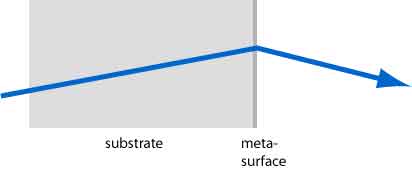We need 200mm 1.0 mm thick Sapphire. We only need two wafers to test. One needs to be double side polished (optical grade) The other needs to be unpolished with a frosty appearance. We want the material to be transparent to infrared light down to the wavelength of 5 microns.
Sapphire Wafer Applications
Sapphire Wafers Transparent to Infrared Light
An opto-electronic engineer requested a quote for the following.
Reference #209328 for specs and pricing.
Why Use Sapphire Substrates?
Sapphire substrates are notable for their well-defined optical constants, which refer to its refractive index and extinction (absorption) coefficient. These parameters determine how light interacts with the sapphire material, including how much light is absorbed, reflected, or refracted.
Sapphire Al2O3 Refractive Index
Sapphire substrates have excellent transparency in a wide wavelength range from UV to IR. They have a high refractive index (about 1.77 in the visible light range) which makes them beneficial in a variety of applications where light manipulation is needed. They are also incredibly durable and resistant to physical damage and chemical corrosion.
Applications that utilize these unique optical properties range from LED production, to optical components in various electronics, to the production of components for high-powered lasers.
Please note that these optical constants can be influenced by the quality and treatment of the sapphire substrate, including factors such as the purity of the sapphire, the crystallographic orientation, and any post-growth treatments that the sapphire undergoes.
What is the Easiest Sapphire Plane to Cleave?
How we help Scientists:
A researchers asked for a quote on 4" and 6" Sapphire substrates (BUY ONLINE):
I will be used to pattern photoresists. As a result, substrates will be exposed to high temperatures (up to 200oC) as well as highly alkaline solutions (pH>12). They will also need to withstand multiple reworks (re: strip photoresists and re-use of substrate many times).
Answer:
Plane (C)= C-plane sapphire is the softest for cleave
Reference #199562 for specs and pricing.
Researchers rejoice! We have a large inventory of sapphire substrates in stock. Below is just a few of what's available. Some sapphire applications include:
- Base wafer for growing III-V and II-VI compounds
- Electronics and optoelectronics devices
- Infrared (IR) applications
- Silicon On Sapphire Integrated Circuit (SOS)
- Radio Frequency Integrated Circuit (RFIC) Devices
Get Your Quote FAST! Or, Buy Sapphire online and start researching today!
Sapphire Wafer Packaging
Please see below for how very secure our sapphire wafer packaging is. 2 spring (claw) on (Spring 2# ) and below (Spring 1#)the wafer to hold the wafer no shifting in the box.
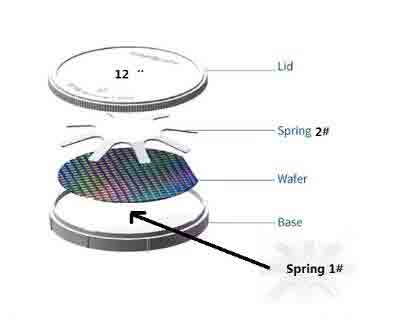
Typical Single Wafer Carrier
Sapphire Semiconductor Substrates are available in all Orientations
Orientations include
Sapphire substrates are available in various shapes (circular, rectangle, or square), from a few mm up to 200mm in size, and finishes according to customer specification. Primary flats(as per industry standards) are provided on circular substrates for orientation purposes; secondary flats are available on request. Substrate thickness' range from 0.013" (0.25mm) to 0.025" (0.675mm), depending on your particular application requirements.
Sapphire Substrate Price
Sapphire semiconductor substrates are manufactured at Sapphire Products from high quality optical grade Czochralski sapphire. UniversityWafer's integrated facilities allow regulation of the production of substrates from crystal growth to fabrication, and to accommodate special requests on very short notice.
We have sapphire wafers in stock!
The sapphire wafers have a high purity >99.996%. See below for impurity analysis for Al2O3 sapphire windows.

Sapphire Wafers for Cryogenic Design
Researcher:
As we are working on cryogenic design. Could you please provide thermal behavior and data file for the sapphire substrate so that we can simulate and use in the fabrication.
UniversityWafer, Inc. Replied:
Pls see below for all the property of the sapphire wafer
" Dielectric properties and optical properties :
Sr. No. Property Value
1 Material 99.996% pure Al2O3 (Alumina)
2 Material class according to DIN EN 60672 C795
3 Density 3.73 g/cc
4 Coefficient of thermal expansion
100° – 200° C 6.0 – 8.0 * 10 -6 /K
100° – 300° C 6.0 – 8.0 * 10 -6 /K
100° – 600° C 6.7 – 8.7 * 10 -6 /K
100° – 800° C 7.0 – 9.0 * 10 -6 /K
5 Dielectric constant (10 MHz to 1 GHz) 8.3 – 11.3
6 Dielectric loss factor (10 MHz to 1 GHz) ≤ 5 * 10 -3
7 Breakdown field ≥ 15 kV/mm
8 E-Modulus ≥ 300 GPa
9 Thermal conductivity at 20° C ≥ 22 W/m K
10 Volume resistivity at
20° C ≥1013 Ω-cm
200° C ≥1011 Ω-cm
400° C ≥109 Ω-cm
600° C ≥107 Ω-cm
11 Water absorption ≤ 0.1%
12 Light transmission characteristics: T>/=80% (0.3~5μm)
What is Sapphire Thermal Conductivity?
Sapphire has a thermal conductivity of approximately 46-50 watts per meter-kelvin (W/m·K) at room temperature. This thermal conductivity value indicates that sapphire is a relatively efficient conductor of heat.
Sapphire optics can withstand elevated temperatures while efficiently transferring heat away from sensitive components. Its ability to conduct heat effectively helps dissipate heat generated thus preventing overheating and maintaining their performance and reliability makes sapphire an excellent choice for high-power electronic devices and semiconductor components.
Overall, sapphire's thermal conductivity is an advantageous property for applications where efficient heat transfer and management are necessary.
What is the refractive index of sapphire?
Refractive index: no =1.768 ne =1.760
How Do You Cut a Sapphire Window?
Sapphire is an incredibly hard crystal. It has excellent chemical and thermal resistance. It is also scratch resistant. The crystalline structure makes it easier to cut than other crystals, and the random orientation of a sapphire window allows you to achieve any desired pattern. These windows are also much thinner than other types of windows, and can operate at temperatures up to 20300C. But, how do you cut a sapphire window in a symmetrical way?
Sapphire is a birefringent, flat, transparent material. To cut it properly, it should be cut along a zero-degree plane, such as the C-Cut. You can also cut it at a random angle to get the best colour and brilliance. The sapphire's transmittance is also improved, so cutting it at a random angle isn't advised. Its ability to resist UV radiation is another benefit.
Unlike diamonds, sapphires are extremely resistant to UV light. Even in sunlight, sapphire will not darken. This means that they can be used in a wide variety of applications. In addition to its durability, sapphire windows can also be thin. In order to create a symmetrical cut, you must make sure that the sapphire isn't distorted or broken.
Sapphire is an optical window - a transparent window made of a hard mineral called sapphire. Because of its transparency, it is highly resistant to shock and is birefringent. In addition to use in high-tech applications, it is a popular choice for optical windows in harsh environments. Additionally, it is widely used for femtosecond lasers in broadband continuum generation.
Sapphire windows are hard and durable, and can withstand high-energy lasers. Because of its optical properties, sapphire windows are thinner than other windows. They can also be cut into random shapes. The shape of a sapphire window will depend on the orientation of the crystal. Regardless of how they are cut, they can be asymmetrical and will help improve the appearance of a room.
The sapphire window is different from any other window. It is not available in a standard cut, and sapphire windows are made using a custom method. They are asymmetrical, meaning that they are flat and parallel to each other. This makes them more expensive, but this makes them stronger and more durable. They will not darken if they are exposed to UV light, and are also much thinner than other types of windows.
Optical Grade. Sapphire is the most expensive type of window. This type of sapphire will not darken due to UV radiation, but will still reflect light and be opaque to light. Because it is transparent, the sapphire window will be able to pass the most amount of light, so it will be the perfect choice for any room. They will also make any room look more beautiful.
Optical Grade: The cut of a sapphire window is crucial. The grade should be optical, but it is important to make sure the glass is cut at the correct orientation. It will not be distorted if you have a perfect angle. If you want a more symmetrical window, you need to use the proper angles. If you are aiming for a symmetrical sapphire window, you need to follow the symmetry of the cut.
Sapphire is a beautiful material that has a unique set of properties. It is one of the most durable crystals. It is also one of the hardest stones in the world. As a result, a sapphire window can be made of different types of materials, and is therefore more expensive. The most common type of sapphire windows are optically-graded. The optical grade is the best choice for any sapphire.
When it comes to sapphire, you should know that it is possible to find a sapphire with a window. A small sapphire with a small window will be more difficult to cut, but it will make the stone look much larger than a sapphire with a larger-quality window. It is important to note that a window is not the same as a sapphire with a large-scaled face.
What is Microroughness of Sapphire Wafer Surface?
The surface roughness of sapphire is a critical factor to the performance of light-emitting devices. This is due to the fact that sapphire is very susceptible to various types of ionizing radiation and charged particles. To further improve the performance of light-emitting devices, it is imperative to optimize the surface preparation of the substrate. Furthermore, the microroughness of sapphire is affected by external action, including the etching process.
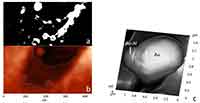
To better understand sapphire microroughness, we first looked at the CL spectra of original and heat-treated sapphire samples. This method revealed that the A-plane sapphire had the highest surface roughness after chemical-mechanical polishing, while the C-plane sample had the lowest. The low F+-band intensity was associated with high surface roughness, and this correlated with the generation of oxygen vacancies.
Moreover, the surface microroughness of sapphire was studied through a chemical etching process. In this process, aluminum atoms were reduced to form nanocrystals and then diffused to the negatively charged gold islands. Hence, the negative charge derived from the sapphire surface was minimized, and this contributed to the continuity of the etching process. Moreover, the flow of aluminum atoms to the gold nanocrystal increased its size and rounded shape at the base region. The presence of aluminum atoms on the surface of the sapphire microroughness could also cause the accumulation of compounds of the Al-Au system.
The degree of sapphire microroughness is largely dependent on the type of machining technique used. Machined sapphire has excellent mechanical, optical, and thermal properties, and it is the material of choice for high-performance systems. However, sapphire is a difficult material to machine. Typically, the most common methods of cutting sapphire are grinding and laser machining. Understanding how sapphire breaks down is essential to optimizing processing parameters.
Growing ZnO Film on Sapphire Substrates
A postdoc requtesed a quote on the following:
Hi, Would you be able to send me a quote for the following ZnO Epi Film on Sapphire wafers. 1) ZnO Film (0.5 um) on Sapphire(0001), 10x10x0.5mm,SSP , undoped, Qty: 01 2) ZnO Film (0.5 um) on Sapphire(0001), 5x5x0.5mm ,SSP, undoped, Qty: 01 3) ZnO Film on Sapphire(0001), 2"x0.5mm, undoped , ZnO: 0.5 um, Qty: 01.
UniversityWafer, Inc. Quoted
ZnO Epi Film on Sapphire wafers.
- ZnO Film (0.5 um) on Sapphire(0001), 10x10x0.5mm,SSP , undoped
- ZnO Film (0.5 um) on Sapphire(0001), 5x5x0.5mm ,SSP, undoped
- ZnO Film on Sapphire(0001), 2"x0.5mm, undoped , ZnO: 0.5 um
Reference # 252990 for pricing.
What Sapphire Substrate Diameters are Available?
We have a large selection of stadard diameters and custom dimension availble. Please send us your specs or click below:


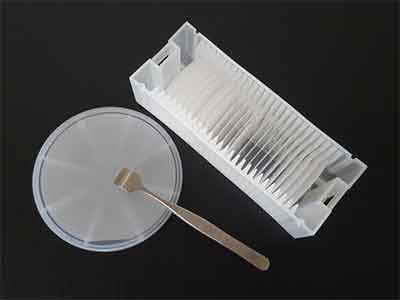 and blue LEDs. Sapphire's s distinct properties that make it an excellent choice for many types of applications.
and blue LEDs. Sapphire's s distinct properties that make it an excellent choice for many types of applications. 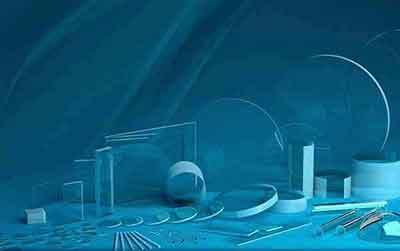
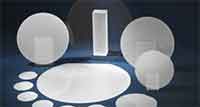 is a large amount of thermal and mechanical stress, which can cause a deep damage layer. After the cutting, the material undergoes a polishing step to increase its flatness and curvature. This step is done to eliminate the damage layer, which can cause cracks.
is a large amount of thermal and mechanical stress, which can cause a deep damage layer. After the cutting, the material undergoes a polishing step to increase its flatness and curvature. This step is done to eliminate the damage layer, which can cause cracks.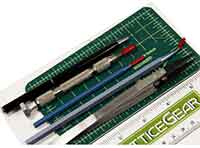 on the size of the wafers, a scriber such as the FlipScribe can be used. A cleaver such as the Cleanbreak Pliers can also be used, allowing you to create perfect kerfs without damaging the surface.
on the size of the wafers, a scriber such as the FlipScribe can be used. A cleaver such as the Cleanbreak Pliers can also be used, allowing you to create perfect kerfs without damaging the surface.